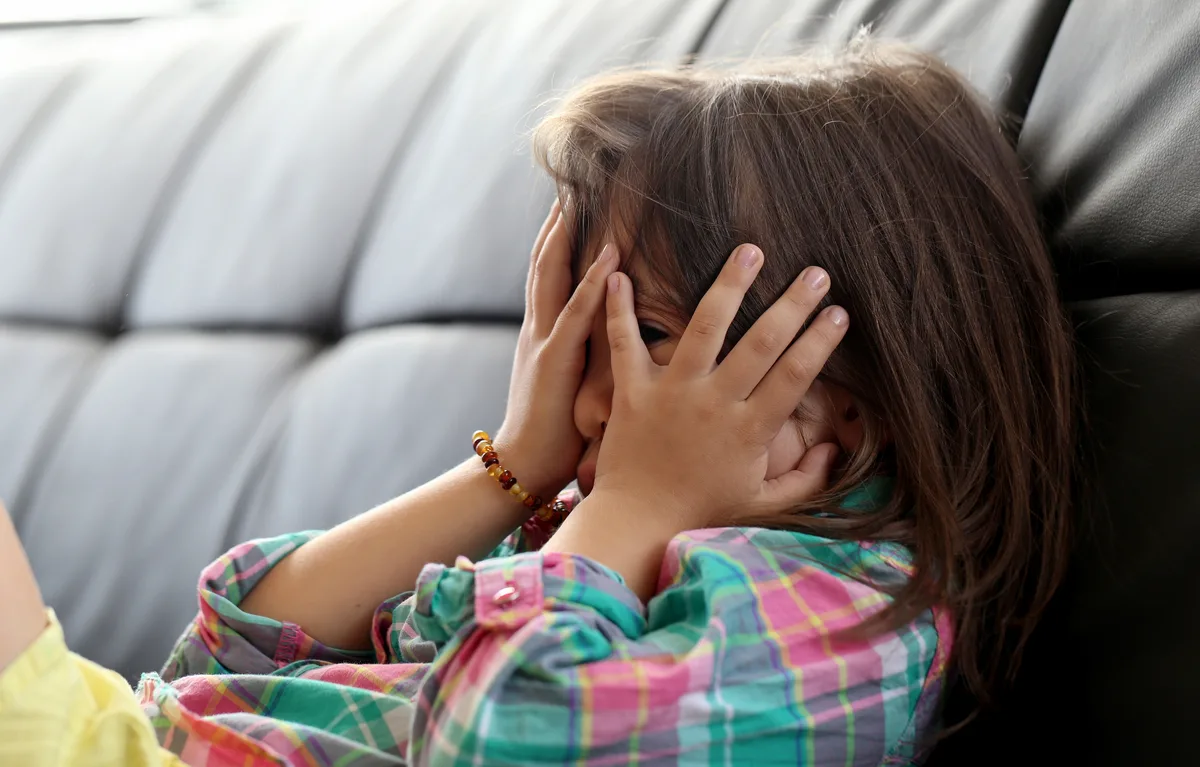Raising kids who can bounce back from setbacks and challenges is something most parents hope for. Resilience helps children withstand bullying, stay focused on goals, and even reduce impulsive behaviors that might otherwise lead to problems. But how do you foster this vital trait in your child? How to help a child with impulse control issues? In this article, we’ll explore practical strategies to promote resilience in your child, empowering them to gracefully handle life’s ups and downs.
What is Impulse Control?
Well, let’s put it this way. You just landed on a new planet. You’re not accustomed to rules, boundaries, traditions, or anything that can disturb your free exploration. You see a fruit, and you want to try it. You see an animal, and you want to pet it. You see a shiny little object and want to take it to bits and see how it works. Everything is so new and tickles your senses.
Now come back to Earth. You’ve just visited the world of early childhood. Impulse control is resisting doing all those things, whether for your safety, physical health, or social development. Are you wondering “How to control impulsive behavior in child”? Let’s first understand why kids are undersupplied in this field and why nature didn’t equip us with this skill.
Defining Impulse Control and its Role in Child Development
Resisting temptations is an essential skill in all stages and aspects of life. It helps us not snap at a coworker who gets on our nerves or keeps us from eating that last tasty brownie when we know we shouldn’t.
For kids, the development of this trait is particularly crucial. As they grow, they face more complex and challenging situations concerning family life, friendships, or school. Learning this skill helps them handle these situations wisely.

Credit: Freepik
Self-control keeps children safe by enabling them to think before they act and make healthy choices, whether deciding not to run across a busy street, choosing nutritious foods over junk food, or avoiding substance use despite peer pressure.
How to control impulsive behavior in child relationships? They need to learn to manage their emotions. This is vital in building friendships and interacting positively with others. It also helps them to stay focused on tasks, ignore distractions, and concentrate on what they need to accomplish. This leads to better grades in school and, later, to improved performance at work. Impulsive behavior in child can cause a lot of problems.
The Neurological Basis of Impulse Control in Children
The human brain comprises various parts, each responsible for different functions. The prefrontal cortex, located in the front part of the brain, plays a crucial role in how we resist temptations. This area is responsible for what scientists refer to as “executive functions,” including decision-making, problem-solving, and, importantly, controlling impulses.
The prefrontal cortex is still developing in young children, making them more susceptible to a lack of impulse control. They might react instinctively, like grab a toy from another child without asking. As the brain matures, the connections between neurons in the prefrontal cortex strengthen, improving the ability to think before acting.
This development is a process that takes time. That’s why even teenagers, who understand right from wrong, might still make impulsive decisions, such as engaging in risky behavior. As parents, it’s challenging to predict how to manage impulsive behavior in child, when they encounter new experiences. Their brains are still in the process of maturing, and total control over executive functioning skills and impulses may not be solidified until early adulthood.
Milestones in Impulse Control
The problem of self-control in young kids is something that can confuse a lot of people. As a matter of fact, about 24% of parents think that toddlers can control themselves and switch to good behavior if they’re told to do so. When children don’t comply, parents get frustrated and sometimes punish their kids when they don’t listen. You might recognize the common,’ but I told him a hundred times,’ uttered to justify resorting to punishment. Yelling or spanking might stop bad behavior for a while, but it doesn’t teach kids how to self-regulate. The impulsive behavior in child will just come back later.
The fear response is a basic self-preservation instinct, while self-control involves thoughtful decision-making. It requires superior executive functions, which are not ready at hand because of underdeveloped regions in the brain. The reality is that self-control usually becomes possible around 3.5 to 4 years old. Until this age, children are primarily driven by their emotions and instincts. We cannot talk about intentional impulsive behavior in child up to this age.
The socialization opportunities in preschool and then in school enhance children’s ability to control impulses. They become more aware of their behavior and how it impacts others. Through parental modeling, education, and the cause-and-effect learning process from previous stages, they start to figure out what might happen if they do something, even before they do it. This change is a big step in how they learn and interact.
👉 Struggling with issues related to impulsive behavior in child? Discover the key to understanding and addressing impulsive behavior in a child by also exploring our article: ‘Top causes for child’s anger and effective solutions for parents.’ Learn how to support your child today!
Recognizing Impulsive Behavior in Your Child
Many studies on self-control in children focus on the child’s ability to delay gratification. In other words, having patience until they get a reward. This might involve resisting an immediate desire, like not eating a cookie or not touching a toy when nobody is watching.
Outside the laboratory, impulse control has more practical uses for a child. Whether waiting for a turn on the swings or thinking twice before crossing a busy street, being able to be patient plays a vital role in a child’s development.
Common Signs of Impulsive Behavior
Imagine putting dessert on the table and asking your child to finish the main course first. Or tell them where you’ve hidden their birthday present but that they can’t see it until the party.
How about this one: ask them to sit still in the doctor’s office and be patient while waiting in line. They sound like impossible scenarios, don’t they?
Well, whether it’s impossible or not so much depends on a few things. Are your kids 2 or 9 years old? Have they been through similar experiences before? Do they know what will happen if they wait? Have you set these rules before, and do they understand why they are in place?
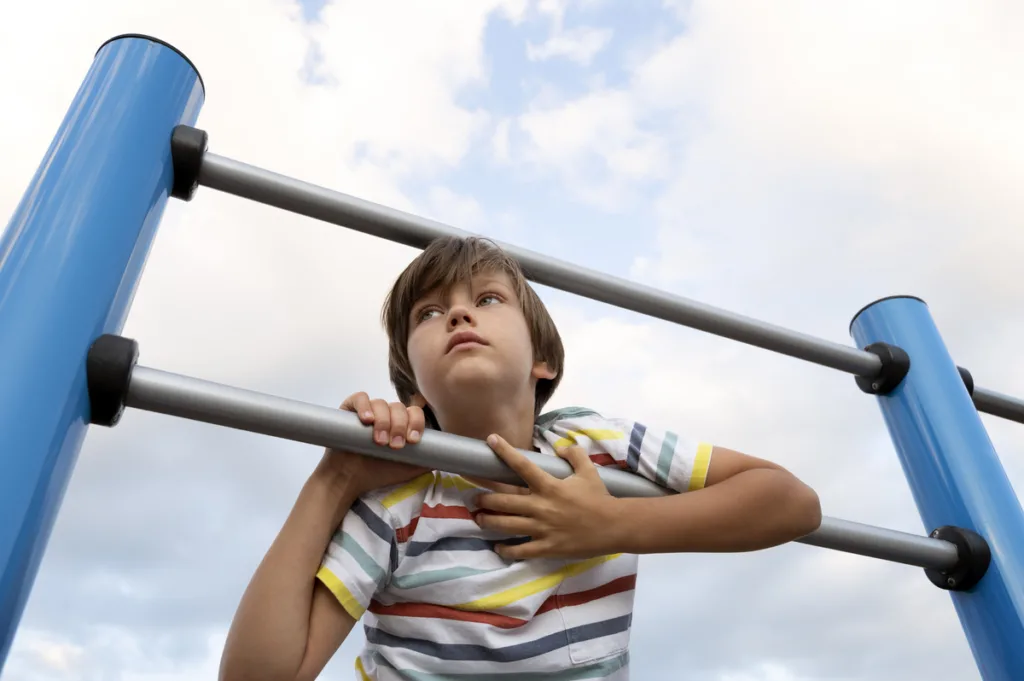
Credit: Freepik
Controlling one’s impulses, especially impulsive behavior in child, is all about predictability and what the child has experienced before. It’s about knowing what will happen if they do something and then being able to choose whether or not to face the consequences. The younger a child is, the less able they are to predict what will happen, so instinct and emotions might take over.
They may cry and fuss for you to cut the cake early, climb furniture to find their present, or even throw a tantrum at the doctor’s office. What’s driving all this behavior? It could be frustration, fear, anxiety, feeling overwhelmed, or overstimulation. The list is longer, but children’s response to all these big feelings looks pretty much the same. Kids will cry, fuss, throw things, or even hit in an attempt to release some of the tension.
Differentiating Between Age-Specific Behavior and Impulsivity
Kids are known for acting like, well, kids. They grow and change a lot, but sometimes they act younger than they are. Maybe a 9-year-old throws a fit when they lose a game, or a well-behaved teenager gets into trouble at school on a given day. These moments may be perplexing and concerning, but they can highlight a normal aspect of human behavior: impulsivity. It’s more like a knee-jerk reaction to something that bothers them.
Impulsive behavior in child is different from just acting out or being aggressive on purpose. It’s more like a quick reaction without thinking; it can happen to anyone when upset or frustrated. We usually expect people, especially as they get older, to act thoughtfully and make good choices. So when a kid does something impulsive, it might feel like something’s wrong with them.
It goes without saying that we have to address what results from a moment of impulsivity. However, understanding that impulsivity is a normal part of development can help parents and caregivers respond with empathy and support rather than disappointment or anger. By recognizing it as a fleeting moment rather than a permanent flaw, we can guide children in developing better impulse control over time.
Environmental Factors that Trigger Impulsive Behavior
“My little angel? She’d never…” This expression of disbelief is something many parents might say. But what if your precious daughter did get into a fight with a boy in her class who had been bothering her for a long time?
Kids sometimes behave differently in various environments. You might be nurturing them into compassionate people at home through empathy and warmth, but not every place they go will provide the same loving support. Whether at school or the park, children may encounter others with poorer self-regulation skills, which can present a real challenge. They might witness extreme behaviors, like shouting or fighting, and even mimic them, especially if they’re keen on drawing some attention.
We can minimize the impact of these external influences by staying true to our values and maintaining consistency at home. Even when the world around them might be chaotic or challenging, our steadfast commitment to boundaries, family values, warmth, and understanding can serve as a reliable compass for our children.
How to Control Impulsive Behavior in Child: Impulse Control Strategies
Impulse control is an essential skill that helps children navigate life’s challenges. Are you wondering how to help a child with impulse control issues? Here are some proven strategies that parents and caregivers can use to help children improve their ability to wait and think before acting:
- Always start with empathy and understanding. They’re learning. Not all behaviors are intentional.
- Help them build a solid emotional vocabulary. They will ask for help if they learn the right words to describe what they’re feeling.
- Consistently (and warmly) enforce boundaries. Explain family rules and values and the reasoning behind them.
- Devise thoughtful consequences (natural or logical). Children will adjust their behavior when they know what’s expected of them and the consequences are fair and age-appropriate.
- Involve children in family decision-making. This will help build responsibility and problem-solving skills.
- Help them find benefits in waiting. Delayed gratification is the biggest challenge of childhood but the most important for developing patience and self-control.
1. Promoting Emotional Awareness and Regulation
In other words, make it a priority to enhance your child’s emotional intelligence. Help them understand emotions by teaching words beyond “happy” or “sad,” such as “disappointed,” “excited,” or “anxious.” Use impulse control games and books as tools to make learning engaging—for example, puzzles or board games where kids have to wait for their turn. ‘Charades,’ ‘Simon Says,’ and ‘Red Light, Green Light’ are games that require a lot of patience and control over those impulsive responses.
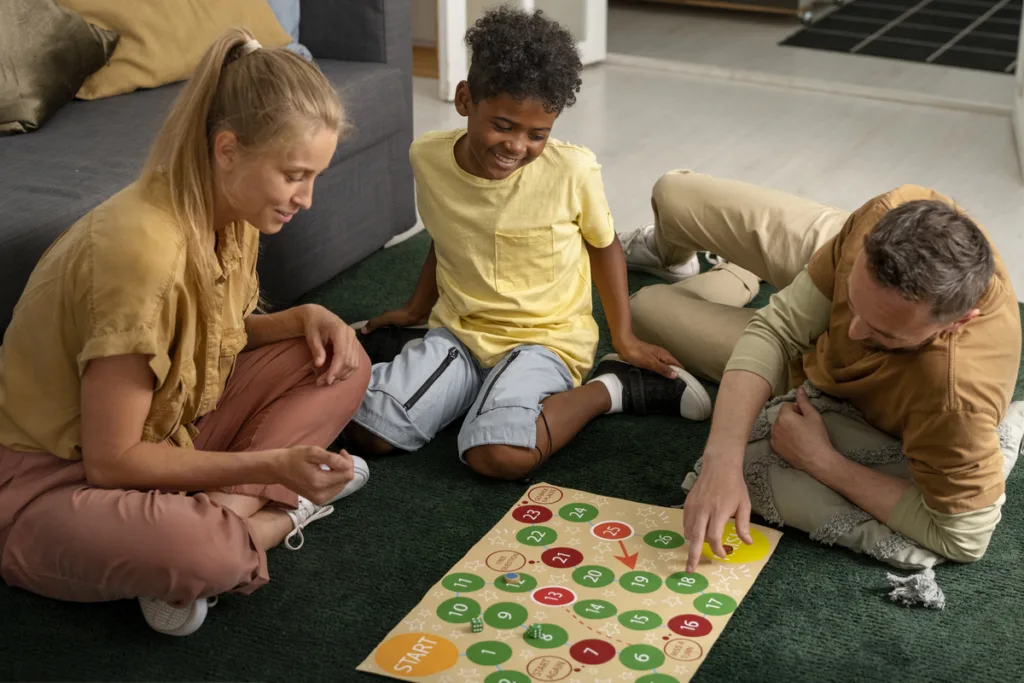
Credit: Freepik
Encouraging self-talk in children fosters self-awareness, helping them identify and articulate their emotions. For example, you can teach a child to say to themselves, “I feel frustrated when I can’t finish my puzzle, but I can take a deep breath and try again.” This kind of internal dialogue helps children develop high self-esteem, become more conscious of their feelings and how to manage them.
2. Setting Clear Boundaries and Consequences
Like any other coping behavior, developing impulse control in children requires clear and consistent rules and consequences. Setting boundaries helps children understand your clear expectations and what behavior is considered unacceptable. For example, if a child knows that they must complete their homework before watching television, they learn to prioritize and control the impulse to engage in leisure activities first.
Consistency in enforcing these rules is equally crucial. If a child sees that the consequences are the same each time they break a rule, it reinforces their understanding and acceptance of the boundaries. This method creates a supportive environment and helps curb the impulsive behavior in child over time.
3. Developing Effective Communication Skills
Teaching kids to control themselves isn’t as simple as telling them what to do and expecting them to listen. It means nurturing a trusting relationship where they feel safe to open up about their issues. It’s about taking them seriously and not minimizing their ideas or concerns.
If a child is feeling particularly frustrated or overwhelmed, instead of dismissing these emotions as trivial, parents and caregivers can ask open-ended questions like “Can you tell me why you’re feeling this way?” This shows the child that their feelings are valid and important, fostering emotional intelligence and self-awareness, key factors in impulse control.
4. Teaching Problem-Solving Techniques
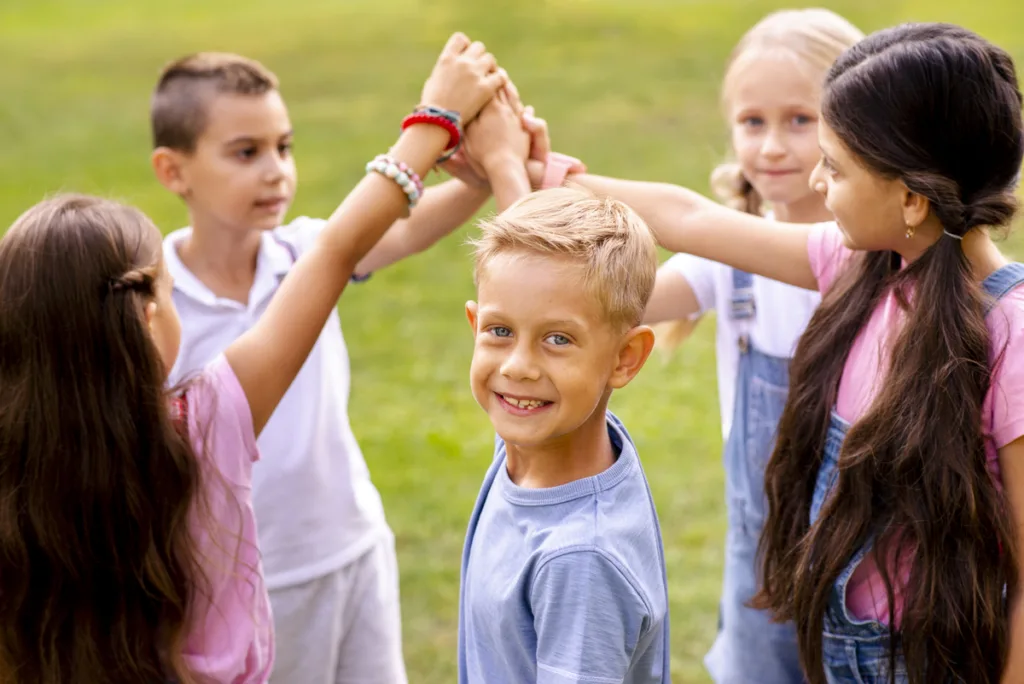
Credit: Freepik
When children learn better ways to handle big emotions, their reactions to frustration mature. Instead of an immediate tantrum or outburst, they can learn to pause, express their feelings calmly and activate their problem-solving skills.
For instance, if you sense a meltdown coming, guide them to pause, identify what they’re feeling, and think of three different solutions to their problem. If their answers align with appropriate behavior – this disclaimer was needed here, right? – allow them to try one out. This practice empowers them to face challenges and nurtures their decision-making abilities, helping them grow more confident and responsible.
5. Encouraging Patience and Delayed Gratification
If you are wondering how to stop impulsive behavior in kids, you should know that teaching children to find benefits in waiting is pretty important. Delayed gratification might be their biggest challenge during childhood, but it’s also an essential skill for their growth. By encouraging patience and explaining the rewards of waiting, children can learn that resisting immediate desires can lead to greater benefits in the end.
Whether it’s waiting for their turn to play with a toy or holding off on a treat until after dinner, understanding the value of patience fosters the ability to control impulses.
Creating a Supportive Environment
Of course, we all strive to create safe and supportive environments for our children. We want them to be happy and healthy. However, sometimes we unknowingly sabotage events that might otherwise go well if they were prepped a bit in advance.
We sometimes break the weekly routine with unplanned events, taking kids along as accessories, not parts entitled to a decision. We forget they’re in the back seat while we ‘give a lesson’ to the driver that cut us off in traffic. We may not consider our children’s need to wind down and not allow space for mindful slow-paced activities. If we’d taken the time to analyze a random week’s dynamic from their perspective, we might be able to pinpoint where some of the challenges with adjusting responses are coming from.
The Role of Parents and Caregivers in Modeling Self-Control
Parents and close caregivers are the first role models to teach self-control behaviors children can pick up on. For example, when a parent calmly handles a stressful situation like being stuck in traffic without losing their temper, they demonstrate patience and composure. Similarly, when a caregiver thoughtfully chooses to save money for a future necessity instead of making an impulsive purchase, they show the value of planning and restraint.

Credit: Freepik
These everyday examples provide children with tangible lessons on controlling their impulses, guiding them in developing essential life skills. Children learn to mirror responsible and measured behaviors by observing these role models.
The Importance of Consistency and Routine
Children thrive on predictability; it gives them a sense of security and control. A sudden change in routine, like a busy weekend or delayed dinner, can throw them off balance and impact their behavior. By keeping to a consistent schedule and carefully preparing them for any unavoidable changes, parents can help maintain their child’s equilibrium.
For instance, if a busy weekend is coming up, consider lightening after-school activities during the week, or if dinner needs to be delayed, think of a simpler dish or delegate the task. Most importantly, involve the kids in these decisions so they feel a part of the process. Their involvement helps in understanding the change and controlling their impulses, knowing what to expect.
Reducing External Stimuli and Distractions
Parents can implement a series of safety measures to prevent impulsive behavior in child, especially when it stems from overstimulation. For example, if a child becomes agitated during crowded social events, arranging smaller playdates with familiar friends might help. Or if the afterschool schedule is packed with high-energy physical activities like sports, balancing it with calming ones like reading or art might help keep the balance.
Children sometimes lack control when bombarded with too many activities or stimuli, so by recognizing the triggers and modifying the routine, we can create a more conducive environment for learning self-control. These adjustments can prevent children from becoming overwhelmed, helping them better manage their impulses.
Incorporating Mindfulness and Relaxation Techniques
‘Sure thing, if I could only catch them and make them sit still,’ shouts a dad from the audience.
For young children, mindfulness and relaxation techniques shouldn’t necessarily come in the form of guided meditations, yoga sessions, or other practices we might resort to as adults.
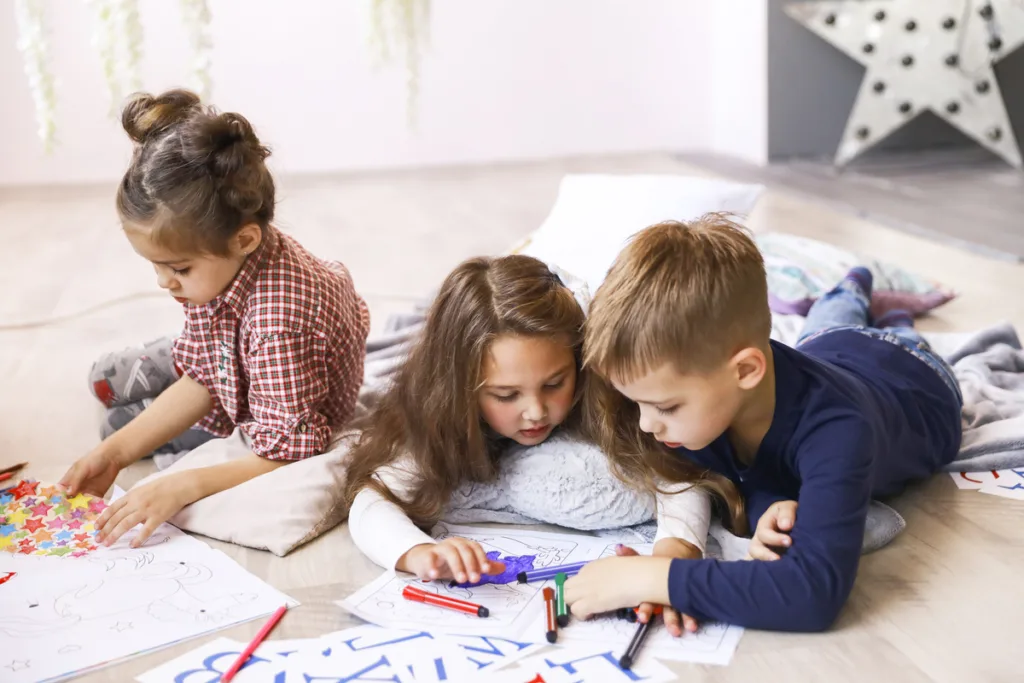
For example, children are naturally mindful when they draw or color. While you cannot force them to do it when they’re overstimulated, popping a new set of crayons or a new coloring book can do the trick. Kids are also mindful when they concentrate on play – yes, that means no TV in the background. Their imagination is more vivid than any guided meditation on a bestselling CD. Some kids relax when they’re being read or sung to.
All these breaks from the more or less chaotic family dynamic will be great for developing coping mechanisms in kids with impulsive tendencies.
Nurturing Resilience in Your Child
Resilience is a valuable skill in all aspects of life. Resilience teaches children to bounce back from setbacks, making them better prepared to face life’s challenges and less prone to impulsive reactions. We can teach children to be resilient by helping them weigh their options when they face a challenge.
For example, a child who loses a soccer game might feel down initially, wanting to quit. Rather than allowing them to dwell on the defeat, we can encourage them to see it as an opportunity for growth. Discuss what went wrong, what can be learned from the experience, and how they might improve for the next game. They may need to practice more or work better with their team. Help kids see the importance of effort and persistence rather than just winning. If you feel like it, you can also help them paint a picture of what might happen if they quit.
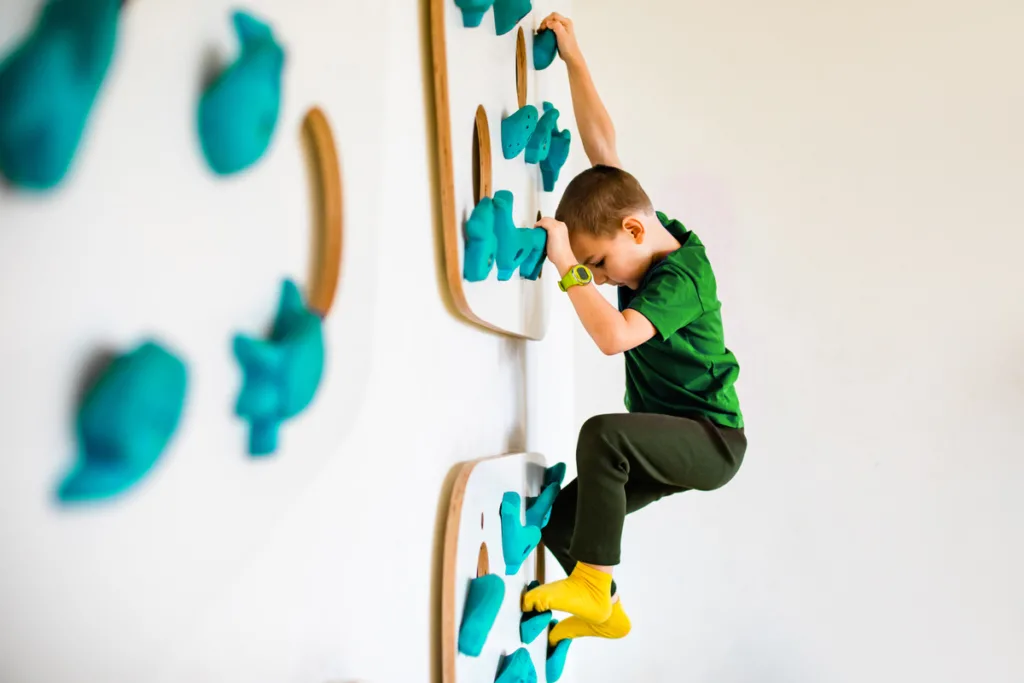
Credit: Freepik
Resilience is the one keeping our heads in the game when dealing with personal relationships. It can reduce impulsive behavior stemming from negative interactions, such as lashing out in anger when someone makes a mean comment. You can teach kids to take a deep breath, think about why the comment was made, and decide how to respond calmly.
👉 How to help a child with impulse control issues? Read more about what to do when your child is out of control and saying hurtful things to you. Discover effective strategies for supporting your child today!
A child who faces rejection from a friend group should be encouraged not to withdraw but finds new friends and learn from the experience. Resilience enables children to withstand bullying, stay focused on their goals, and reduce impulsive behavior. It serves as a shield for their mental health, equipping children to deal more effectively with the ups and downs of social life.
When to Seek Professional Assistance
Recognizing when professional help is needed for impulse control issues in children is vital. If you observe that your child’s impulsive behavior continues despite your best efforts, or if it worsens over time, it might be a sign of an underlying issue. Conditions like Attention Deficit Hyperactivity Disorder (ADHD) or autism can challenge the ability to control impulses. In such cases, visiting a pediatrician or a child specialist is crucial. They can conduct assessments and recommend appropriate therapies or treatments. Seeking professional guidance ensures your child gets the specific support needed to thrive.
Conclusion
We saw that impulse control is vital in child development, guiding emotional, cognitive, and social growth.
How to control impulsive behavior in child experiences? By understanding that impulsive behavior in child is linked to the development of the prefrontal cortex, which matures over time. This growth process affects a child’s ability to control impulses, make sound decisions, and think about the consequences of their actions. Teaching children to understand and express their emotions reduces behavior problems, while resilience helps them face challenges and setbacks.
Are you seeking effective strategies to handle impulsive behavior in child? Join our upcoming parenting event, “4 Steps to Calm You And Your Child During Tantrums, Hitting or Yelling Hurtful Things.” Learn from experts how to nurture impulse control, build resilience, and create a supportive environment that aligns with your child’s neurological development. Gain insights into the value of patience, clear expectations, and fun ways to guide your child’s behavior. Don’t miss this opportunity to equip yourself with the tools to help your kids thrive. Reserve your spot today!
Looking for an insightful chat about how to help a child with impulse control issues? Our clever AI assistant, Sophie is working round the clock to equip parents with proven strategies to tackle any problem.
References
Bronson, M. (2000). Recognizing and supporting the development of self-regulation in young children. Young Children, 55(2), 32-37.
Chen, Y., Meng, F., Yu, Y., Chen, C., Hung, Y., Lin, C., & Chi, J. (2021). Developmental Traits of Impulse Control Behavior in School Children under Controlled Attention, Motor Function, and Perception. Children, 8(10). https://doi.org/10.3390/children8100922
Copple, C. (2003). Fostering young children’s representation, planning, and reflection: A focus in three current early childhood models. Journal of Applied Developmental Psychology, 24(6), 763-771. https://doi.org/10.1016/j.appdev.2003.09.007
Duckworth, A. L., Gendler, T. S., & Gross, J. J. (2014). Self-control in school-aged children. Educational Psychologist, 49, 199–217. https://doi.org/10.1080/00461520.2014.926225
Philippe, G., Courvoisier, D. S., Billieux, J., Rochat, L., Schmidt, R. E., & Linden, M. V. D. (2010). Can the distinction between intentional and unintentional interference control help differentiate varieties of impulsivity? Journal of Research in Personality, 44(1), 46-52. https://doi.org/10.1016/j.jrp.2009.10.003
Raghunathan, R. S., Musci, R. J., Knudsen, N., & Johnson, S. B. (2023). What children do while they wait: The role of self-control strategies in delaying gratification. Journal of Experimental Child Psychology, 226, 105576. https://doi.org/10.1016/j.jecp.2022.105576
Tao, T., Wang, L., Fan, C., & Gao, W. (2014). Development of self-control in children aged 3 to 9 years: Perspective from a dual-systems model. Scientific Reports, 4. https://doi.org/10.1038/srep07272
Tierney, A. L. (2009). Brain Development and the Role of Experience in the Early Years. Zero to three, 30(2), 9. https://www.ncbi.nlm.nih.gov/pmc/articles/PMC3722610/
York, C. (2001). Piaget’s Sensorimotor Stage: Activities to Enhance the Cognitive Development of Infants and Toddlers. Graduate Research Papers. 1570. https://scholarworks.uni.edu/grp/1570
Zero to Three. (2019) Tuning in: parents of young children tell us what they think, know and need. https://www.zerotothree.org/resource/national-parent-survey-report/

